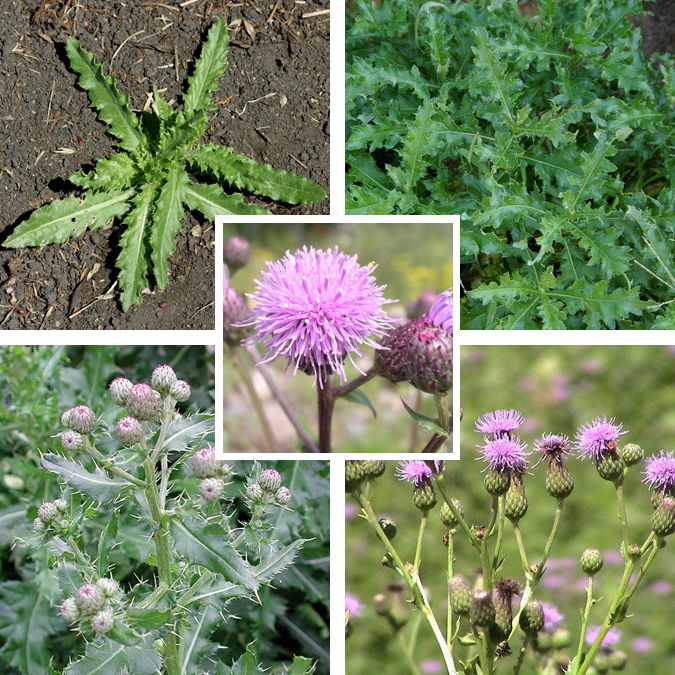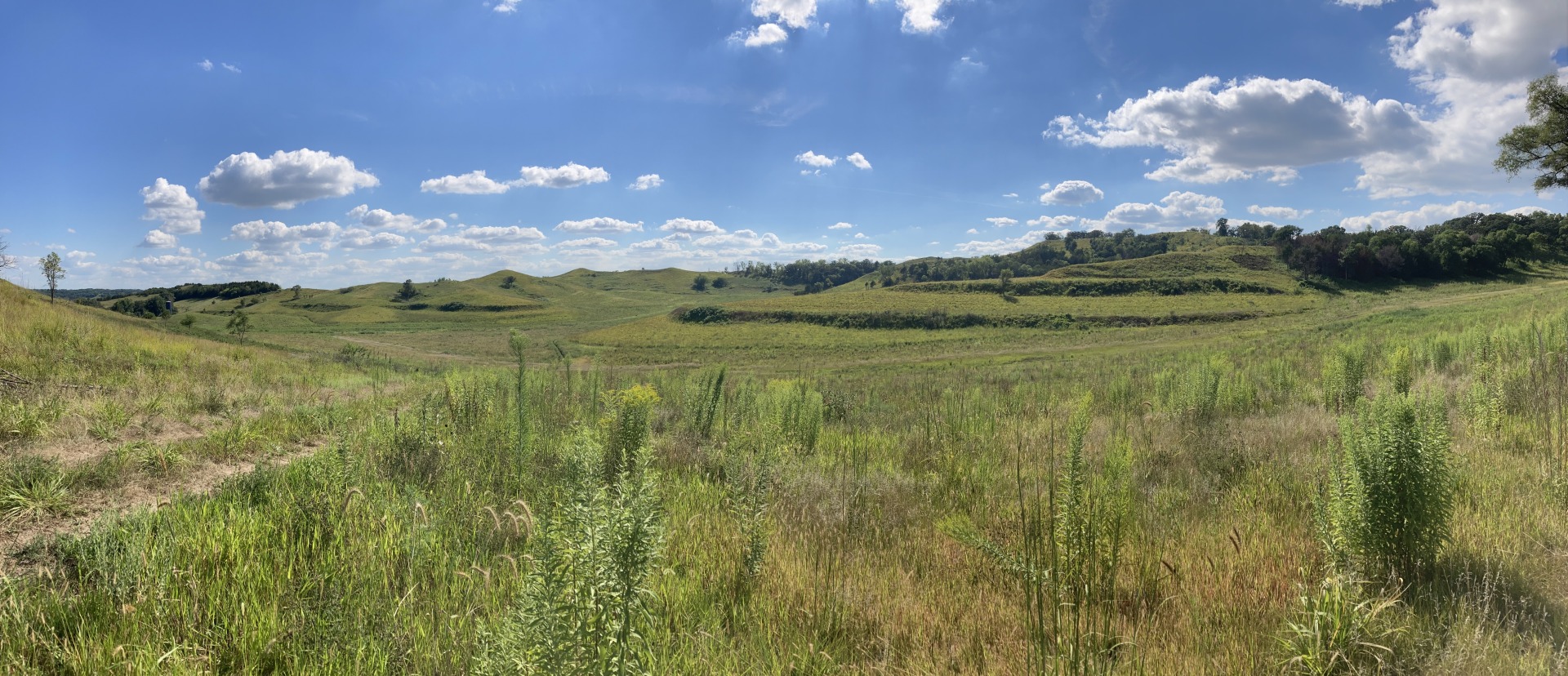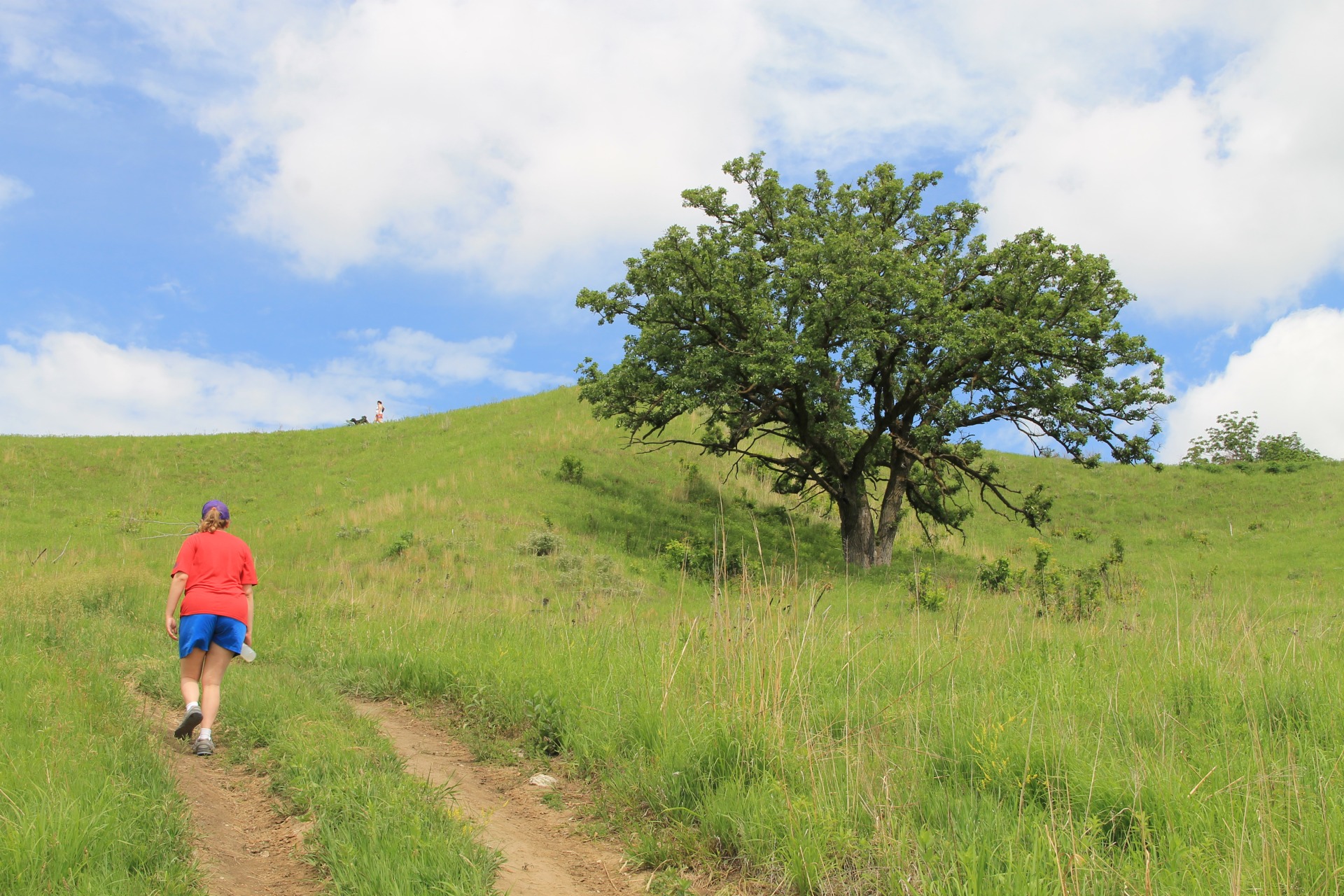These popular topics are heating up. Explore today's most viewed pages.
— Natural Resource Specialist Chad Graeve, speaking to interns before setting out to restore the landscape.

Canada thistle (Cirsium arvense), one of our regions's more difficult non-native invasive species
To say removing invasive plant species requires blood, sweat, and tears might be a little dramatic, but not by much. Each growing season, and specifically in the heat of summer, our Natural Areas Management team combs through Pottawattamie Conservation parks and habitat areas, various tools in tow, and eliminate as many non-native invasive plant species as they can.
Some days it’s over 100 degrees, others it’s pouring rain, but the mission remains the same: beat these invaders before they spread.
Why does our team risk sunburn, insect and tick bites, poison ivy, heat exhaustion, wild parsnip, and sore backs, legs, and arms? It’s a race against the clock and for the future of America because they know that if they miss just one invasive plant it could drop thousands of seeds that may remain viable for decades to come.
Why does that matter? Well, if left to their own devices these invasives would quickly spread and shade out or push out important native plants, reducing the biodiversity that makes our parks so special. But far beyond creating beautiful vistas and recreational opportunities, this biodiversity is also essential for supporting the pollinators we depend on for one out of every three bites of food, protecting our water sources, and providing habitat for wildlife.
Perhaps most important, removing these invaders from remnant prairie found at Hitchcock Nature Center is vital to preserving these special ecosystems that covered 85% of Iowa just 175 years ago. Today? Less than 0.1% (just to reiterate, that’s less than one-tenth of one percent) remains.

Managers of remnant prairie recognize these are ecosystems that we can never get back, despite our country’s “disposable” mindset where we’re led to believe that one can simply buy a new one. While we can recreate the look of remnant prairie with prairie reconstructions, reconstructed prairie will never function or provide the same services that remnant prairie provides. Once destroyed, plowed up, or built over, it is impossible to restore a remnant prairie to its former glory, no matter how much money you have, so we must be vigilant to protect the small patches that are left.
The work will never be done, and many park visitors will never realize it even took place. Even though few humans will be grateful for the painstaking and sometimes back-breaking efforts we’ve put into preserving natural areas across Pottawattamie County, we know there are countless mammals, birds, invertebrates, and even bacteria that will be, and that’s what propels us forward each day. Over time, we know more humans will begin to appreciate this work as well.
As explained in his story, biologists like Jerry Wilhelm came to understand that remnant prairie is America. It’s the land we inherited and that can serve us well if we treat it right.
This land is your land, this land is my land, and this land needs saving from ourselves, for ourselves.
